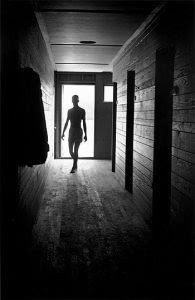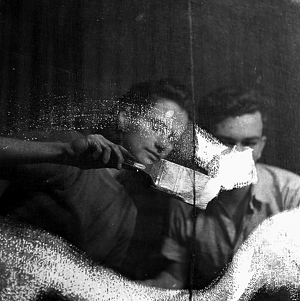


 images & copy courtesy of Mary Emma Harris www.bmcproject.org
images & copy courtesy of Mary Emma Harris www.bmcproject.orgBlack Mountain College Bulletin
Vol. 1, No. 3 (February 1943)
"If you are interested in the world you live in and the way men think and act; if you are interested in finding a purpose in your own working and learning, Black Mountain will attract you. If you are interested in an education which asks the best you have to give; if you are willing to give yourself to education all day every day; if you can put aside preconceived notions of the world and of yourself, you will like Black Mountain.
Here you will find a college whose faculty consists of a distinguished group of scholars and artist from America and abroad; whose students represent an economic and geographic cross-section of this country, with several coming from foreign lands; a college whose students are characterized by unusual vigor, curiosity and self-reliance..."
--------------------------------------------------------------------------
"Black Mountain College is a small cosmopolitan community of students and teachers living together an education stressing democratic co-operation. Through participation in the life of the community, through study and discussion of the past and present, through the discipline of the studio, the laboratory, and a comprehensive campus work-experience program, it is preparing citizens with the understanding and the maturity to play a constructive part in the world at war and in the post-war world.
Black Mountain differs in many respects from traditional liberal education. It rejects the required curriculum, the report card, the board of trustees. It finds that intensive and independent work under faculty guidance, discussion classes, continual contact with teachers, are more conducive to learning than the syllabus and the weekly quiz. It finds that participation in the operation and maintenance of the College and its community are better guides to a democratic way of life than fraternity politics or organized athletics. It finds that eager students living, studying, working with interesting people in a stimulating community discover themselves and the world as they never could through the academic formality of a more traditional college..."
"Art at Black Mountain is based upon art as an active, appreciative and creative force permeating all activities of life. It attempts to aid the student to see in the widest sense; to open his eyes to his own living, being, doing; to understand the essential crafts, tools and materials. Art students learn that the experience of creating, constructing, and seeing is not a hobby or a pastime..."





























